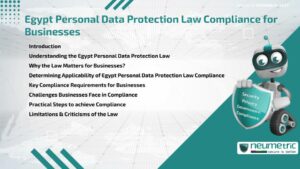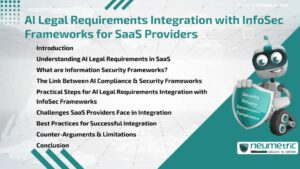Table of Contents
ToggleIntroduction
The question of how Attackers use AI against SaaS Platforms has become a central concern for Organisations worldwide. Malicious Actors now harness Artificial Intelligence to automate Phishing Campaigns, bypass Security Controls & exploit Vulnerabilities in Cloud-based Applications. At the same time, defenders must quickly adapt, as Software-as-a-Service [SaaS] Platforms carry sensitive Business Data & are attractive targets for Cybercrime. This article explores the strategies Attackers deploy, why SaaS Systems are particularly vulnerable & how Organisations can effectively respond to these evolving Risks.
The Rise of AI in Cyber Attacks
Artificial Intelligence was once viewed solely as a defensive tool. Today, Attackers use it to craft sophisticated Social Engineering Campaigns, generate Deepfake content & analyse System behavior at scale. For example, AI-driven Phishing Emails can adapt their wording to avoid detection, while Machine Learning Models allow Attackers to test thousands of Password variations against Login portals in record time.
This shift demonstrates that AI is not inherently good or bad. Like electricity, its impact depends on who wields it. When placed in the hands of Malicious Actors, AI becomes a powerful amplifier of existing Cyber Threats.
Why SaaS Platforms are Prime Targets?
SaaS applications store Financial records, Customer details & proprietary Intellectual Property, making them a digital goldmine. Attackers favor these Platforms for several reasons:
- They are widely accessible via the internet, increasing exposure.
- Multi-tenant structures mean one weak point can impact many Customers.
- Misconfigurations in Identity & Access Management often create entry points.
Because SaaS Platforms integrate with countless other Applications, an Initial Breach can cascade across an organisation’s entire Digital Ecosystem.
Common Methods of how Attackers use AI against SaaS
Several AI-driven tactics stand out in the SaaS Threat landscape:
- AI-powered Phishing: Emails generated by Natural Language Models appear more authentic & evade Spam Filters.
- Credential Stuffing Automation: Attackers use AI to test massive volumes of stolen Credentials against SaaS Logins.
- Malware Evasion: AI can repackage Malicious Code to avoid Signature-based Detection.
- Anomaly Detection Manipulation: By studying the behavior of SaaS Monitoring Tools, Attackers train AI Models to mimic legitimate activity.
These methods make it increasingly difficult for traditional Security Systems to detect & stop malicious activity.
Defensive Measures for SaaS Security Teams
Organisations must recognise that Attackers are not just using brute force but also intelligence. Defensive strategies include:
- Multi-factor Authentication to reduce the value of stolen Credentials.
- Behavioral analytics to spot unusual login patterns.
- Continuous Monitoring of SaaS integrations to identify hidden entry points.
- Regular Security Audits to minimise configuration mistakes.
These defenses may not eliminate Risk entirely but raise the difficulty & cost for Attackers.
Balancing Automation with Human Oversight
Automation can improve security response times, but over-reliance on AI introduces blind spots. Human Analysts remain crucial for interpreting context, investigating anomalies & making judgment calls. Just as Attackers blend automation with strategy, defenders must blend AI-driven Security Tools with Expert Human insight.
Limitations & Counter-Arguments
Some argue that the hype around AI-powered Attacks is exaggerated. After all, many Breaches still result from poor Passwords or Unpatched Systems rather than cutting-edge AI. While this is true, dismissing the role of AI is dangerous. Even if AI is not the root cause of every Attack, it accelerates & scales traditional methods, making them more effective than before.
Best Practices for Responding to AI-Powered Threats
SaaS security teams should:
- Train Employees to recognise AI-driven Phishing attempts.
- Establish strict Access Controls based on Least Privilege.
- Share intelligence with Industry peers to detect emerging patterns.
- Implement Incident Response Playbooks that account for AI-based Threats.
By approaching security holistically, Organisations reduce their exposure to evolving Attacker techniques.
Takeaways
- Attackers use AI against SaaS Platforms to increase speed & sophistication of Attacks.
- AI has a dual nature in Cybersecurity: it can be both a Threat & a Defense.
- Defenders can leverage AI to enhance Monitoring & Detection capabilities.
- Effective defense requires combining smart Automation with Human expertise.
- Practical safeguards, such as Multi-factor Authentication [MFA], are essential for resilience.
FAQ
What does it mean when we say Attackers use AI against SaaS?
It means Attackers apply Artificial Intelligence to automate Phishing, Credential Attacks & Evasion techniques against Cloud-based Platforms.
Why are SaaS Platforms particularly Vulnerable?
Because they are internet-facing, contain Sensitive Data & often have complex integrations that expand the Attack Surface.
Can AI bypass traditional Security Measures?
Yes, AI can mimic legitimate User behavior & repackage Malware, making it harder for rule-based defenses to detect Threats.
How can Organisations defend against AI-driven Phishing?
They can train Employees, use Email filtering enhanced with Machine Learning & enforce strong Authentication Policies.
Do all Cyber Attacks on SaaS involve AI?
No. Many Breaches still occur due to Weak Passwords or Misconfigurations, though AI is increasingly common in large-scale Attacks.
Should Companies rely fully on AI security Tools?
No. AI should support but not replace Human judgment. Effective defense requires both Technology & Expert oversight.
What role does User Awareness play in defending SaaS?
User Awareness is essential because even the most advanced AI Tools cannot prevent an Employee from clicking on a Malicious Link.
Need help for Security, Privacy, Governance & VAPT?
Neumetric provides organisations the necessary help to achieve their Cybersecurity, Compliance, Governance, Privacy, Certifications & Pentesting needs.
Organisations & Businesses, specifically those which provide SaaS & AI Solutions in the Fintech, BFSI & other regulated sectors, usually need a Cybersecurity Partner for meeting & maintaining the ongoing Security & Privacy needs & requirements of their Enterprise Clients & Privacy conscious Customers.
SOC 2, ISO 27001, ISO 42001, NIST, HIPAA, HECVAT, EU GDPR are some of the Frameworks that are served by Fusion – a SaaS, multimodular, multitenant, centralised, automated, Cybersecurity & Compliance Management system.
Neumetric also provides Expert Services for technical security which covers VAPT for Web Applications, APIs, iOS & Android Mobile Apps, Security Testing for AWS & other Cloud Environments & Cloud Infrastructure & other similar scopes.
Reach out to us by Email or filling out the Contact Form…





